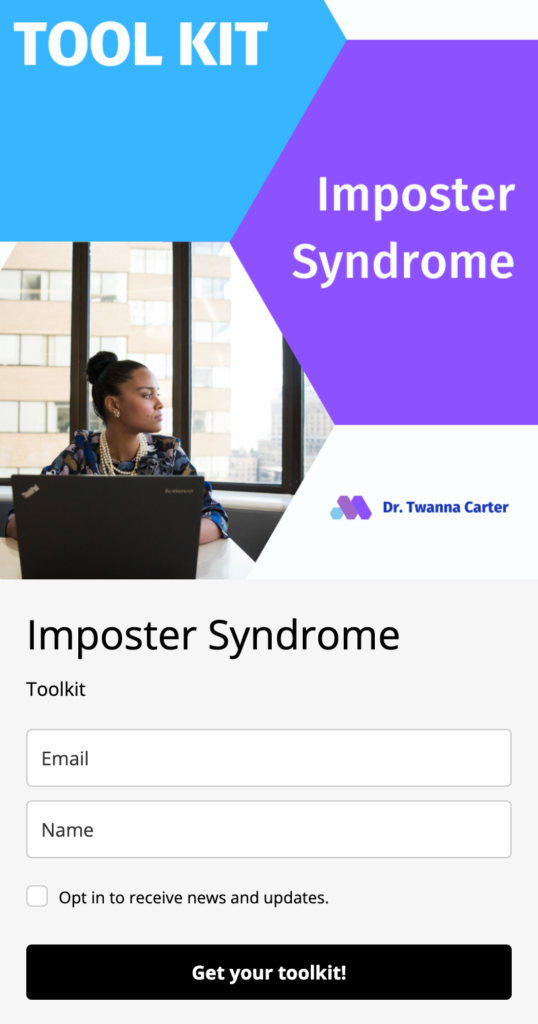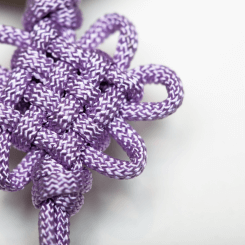May 6, 2020
Everything has changed in the past three months in major ways, including our mental health. More than 35 million people have lost their jobs in the United States, businesses have forced to shutter their doors. Shelter-in-place order are in effect, and everything from school to work to happy hours have been halted.
One of the biggest changes that people are struggling to deal with is the shelter-in-place order thats forcing everyone to stay home. We’re all stir crazy, we feel isolated, and its much harder than most people would have thought. Many, as a result, have experienced increased levels of anxiety or depression.
Sheltering in place can have a major impact on your mental health for a number of different reasons. In this post, were going to take a close look at specific ways shelter-in-place orders can negatively impact your mental health and the steps you can take to prevent anxiety and depression.
It Removes Normalcy & Routines from the Equation
Your entire life has been turned upside down.
Before the shelter-in-place orders, you were getting up at 7AM every morning to feed and walk the dog, go to the gym, and then shower before heading to work.
Now, though, you’ve got nowhere to go. You sleep until the dog wakes you up at 10 and you stay in your pajamas all day. This isn’t intentional, and may have even felt like a luxury at first, but it starts to take a toll.
Those with anxiety are particularly susceptible to negative mental health effects when the routines they’ve found comfort in are suddenly disrupted.
When you’re removing all normalcy and routines from the equation, it can send your mental health into a tailspin. There’s no routine, and you feel off balance. This can make it feel like any goals that you were working towards aren’t important or achievable anymore.
The Solution
Set a new routine that makes you feel productive and that encourages you to take care of yourself.
Get up at 8 (getting extra sleep since there’s no commute to work). Feed the dogs and walk them, and then do a 30-minute workout at home. Take a shower and get dressed. Even if you’re in comfortable jeans instead of a suit, change out of the PJs you wore.
Make sure that you’re taking time to eat healthy meals several times a day. Focus on adding new elements to your routine that help you feel good about yourself.
Shelter-in-Place Can Make You Stir Crazy
When you’re stuck in one place, it’s normal to get stir crazy. This can send anxiety skyrocketing before you know it as you become increasingly restless.
When you’re stuck at home, you get cooped up quickly. There are limited distractions from the anxiety you’re managing, and when everything in the world is scary enough (with worries about job security, the economy, and a dangerous virus), it can be hard to focus on the positive or get our mind off the anxiety.
The Solution
While shelter-in-place and social distancing orders are still enacted or recommended, you cant exactly go to the movies or have happy hour in a bar with your friends.
You can still physically leave your home though, as long as you’re doing so carefully. You can sit on your patio or in your backyard if you have one to get some fresh air and enjoy watching the clouds.
Take a walk around the block. You may still get to do some people watching from a distance.
You can even take a drive to a new place just to get out.
Fresh air can do you a lot of good, and its good for your mental health to have a change of pace when needed.
It Promotes Isolation
Isolation is never good for mental health. Even if you’re living with a partner or roommate, it can still be hard to be cut off from the rest of your support system, which may include friends, family, and even coworkers.
Isolation can promote anxiety and depression, significantly raising stress levels quickly. This is true for both extraverts and introverts, though extraverts are typically affected more quickly.
The Solution
Take time to connect with the people around you, even when you need to do so from a distance.
Set up Zoom or Facetime sessions with your friends and family, even having happy hour over a video call.
If you’re living with your partner, have date nights at home. Choose a great movie, make a dinner or safely order delivery from a favorite restaurant. Try cooking a new dish together or taking an online dance class.
Even online Facebook groups centered around positive and support can be useful.
Shelter-in-Place Can Foster Anxiety
When you’re stuck in a shelter-in-place order, it feels a little like the world has paused and theres nothing to do but read terrible news about the world state. This can naturally make us anxious and keep us anxious.
Again: There are no distractions, and even scrolling through social media in hopes of feeling connected can cause us to be drowning in COVID news that keeps the anxiety high.
The Solution
It’s hard, but turn off the news. Establish check in times where you can look for updates about everything related to the virus based on your specific needs. Some people may be okay checking in for fifteen minutes twice a day, while others may be better off getting relayed information from an informed friend once a week.
Instead of fixating on news and updates, focus on something that makes you happy. Play with your kids, or the cat, or your dogs. Read a favorite book or put on a comedy special on Netflix. Make yourself a great meal, or a delicious dessert.
Take time to meditate. If you’re new to meditating, apps like Calm can help you get the hang of mindfulness and soothe some anxiety.
No matter what, limit how much news and social media time you have daily. Cutting back on the negative can improve your mental health quickly, allowing for resilience.
It Cuts Off Access to Normal Workouts
There are multiple studies that demonstrate how beneficial exercise can be for mental health. The rush of endorphins after a good workout can reduce anxiety and depression while boosting your mood.
Unfortunately, shelter-in-place orders have cut off access to most peoples established workouts. Their in-person yoga classes have been cancelled, they can’t go boxing, and even the gym is out of the question. This can quickly start to ramp up anxiety and depression, as well as negatively impacting energy levels.
The Solution
No matter what your favorite workout entails, there are an enormous number of online resources that can help you keep your blood pumping at home. You can find paid programs and free YouTube videos alike that have full yoga sessions, boxing combos, barre lessons, body-weight exercises, and more.
For an added boost, consider looking for an online workout program that puts an emphasis on community. This can be a good way to meet more people and have positive social interactions; some, for example, may have private Facebook groups to consider joining.
Conclusion
Anxiety is high right now. Even those who normally manage their anxiety successfully may be struggling more than they typically do.
Ultimately, the coronavirus is a powerful reminder why resilience is so important. When you’ve learned how to manage anxiety through resilience, you’re able to more effectively ward off negative health impacts from unexpected events like the COVID19 shelter-in-place orders. You’re able to find new ways to adapt and power through hard situations, staying happy and healthy and ready to tackle whats next.
ALWAYS RISING ABOVE!
xoxoxo Dr. Twanna


I’m an ICF Professional Certified Coach (PCC) and career coach for Twanna Carter Professional & Personal Coaching, LLC. I failed my first career transition from the military so badly, it took me the next 10+ years to build my confidence and recover. I know what it feels like to struggle with imposter syndrome and uncertainty about my worth in the workplace. It’s why I am dedicated to empowering Black women. Helping them navigate change and uncertainty by providing them with the tools and strategies they need to be successful. Schedule a free 30-Minute Career Solution Call today.
Curated Reads: Essential Books to Add to Your Personal Library
- Melaninated Magic: 180 Affirmations to Nurture Your Soul and Unleash Your Black Girl Joy by Twanna Carter, PhD
- I’m Not Yelling: A Black Woman’s Guide to Navigating the Workplace (Successful Black Business Women), Elizabeth Leiba
- Stop Overthinking: 23 Techniques to Relieve Stress, Stop Negative Spirals, Declutter Your Mind, and Focus on the Present (The Path to Calm) by Nick Trenton
- Influence: The Psychology of Persuasion by Robert B. Cialdini
- How to Win Friends and Influence People by Dale Carnegie
- High-Functioning Anxiety: A 5-Step Guide to Calming the Inner Panic and Thriving by Dr. Lalitaa Suglani
- “Quiet: The Power of Introverts in a World That Can’t Stop Talking” by Susan Cain.
- Unleash your career potential with our free library of resources. Access our free Career Resource Library today and start your journey to a more fulfilling career.
- Taming Your Gremlin: A Surprisingly Simple Method for Getting Out of Your Own Way by Rick Carson
- The Confidence Code: The Science and Art of Self-Assurance—What Women Should Know by Katty Kay & Claire Shipman
- Stop & Shift: The Mindset Reset that Changes Everything by Karen Allen
- Unapologetically Ambitious: Take Risks, Break Barriers, and Create Success on Your Own Terms by Shellye Archambeau
Read my latest blogs…
- Are You Really Being Too Much, Or Just Being Seen?Have you ever felt the need to shrink yourself at work or in social spaces, just to avoid being labeled as “being too much”? Maybe you’ve been told you’re too outspoken, too confident, too ambitious, or simply too visible. For many Black women and… Read more: Are You Really Being Too Much, Or Just Being Seen?
- Career Shift? These 9 Transferable Skills Resources Are Game-ChangersAs an executive-level professional aiming for a strategic career pivot, knowing your transferable skills isn’t just beneficial, it’s essential. Transferable skills are abilities you carry from one job to another, vital for succeeding across various roles and industries. For senior-level executives, clearly identifying and… Read more: Career Shift? These 9 Transferable Skills Resources Are Game-Changers
- You Need a Hustle Detox. Not Another Planner.Are you tired of buying yet another planner, hoping THIS one will finally fix your chaos? You know the drill: glossy cover, color-coded tabs, promises of productivity magic. But a few weeks in, you’re still overwhelmed, exhausted, and drowning in to-dos. The truth? It’s… Read more: You Need a Hustle Detox. Not Another Planner.
- The 5 Core Values Every Black Woman Executive Should Define Before Her Next Career MoveHave you ever felt overwhelmed by opportunities, yet unsure which path truly fits your ambitions, identity, and well-being? If you’re a Black woman executive ready for your next career move, now is the time to get strategic and clear. The key? Defining your non-negotiable… Read more: The 5 Core Values Every Black Woman Executive Should Define Before Her Next Career Move
- How to Protect Yourself from Being Managed Out – The Ultimate Survival Playbook for Black Women ExecutivesYou walk into the Monday morning meeting, coffee in hand, feeling ready to tackle the week. But something’s off. The room feels colder. Your input is brushed off. Projects you once led are handed elsewhere. Uh-oh! Is it just your imagination? Or is… Read more: How to Protect Yourself from Being Managed Out – The Ultimate Survival Playbook for Black Women Executives
- What Your Inner Critic Is Really Costing You. And How to Take Back ControlHave you ever replayed a single mistake in your mind for days, doubted your abilities before a big meeting, or hesitated to ask for a raise because you weren’t “ready”? That relentless voice in your head, your inner critic, might feel like it’s keeping… Read more: What Your Inner Critic Is Really Costing You. And How to Take Back Control
- Why Black Women Execs Doubt Their Voice (and How to Reclaim Your Power)And it starts now. If you’re ready to reclaim your voice, you don’t have to do it alone. Schedule your V.I.P. Roadmap Session today. A 45-minute, focused coaching session where you’ll walk away with a personalized strategy for leading on your terms, without burnout,… Read more: Why Black Women Execs Doubt Their Voice (and How to Reclaim Your Power)
- The Trauma Behind the Mask: Why I Walked Away from My Six-Figure JobI didn’t leave my job because I was unqualified. I didn’t leave because I couldn’t handle the work. They began managing me out. Because I followed policy and chose to telework during the height of COVID-19. I left because of workplace trauma. Let that… Read more: The Trauma Behind the Mask: Why I Walked Away from My Six-Figure Job
- Stop Overgiving. Because It’s a Silent Career Killer for High-Achieving WomenYou’re smart. Capable. The one everyone counts on. From boardrooms to family rooms, you handle it all with grace. But beneath the surface, you’re exhausted. And, yes, maybe a little resentful. You’re doing everything right, yet something still feels off. Let me tell you… Read more: Stop Overgiving. Because It’s a Silent Career Killer for High-Achieving Women
- You Feel Empty at Work, But Everyone Needs YouFor Black Women Who Keep Performing. Even When the Tank Is Empty Let’s keep it real for a moment, how many times do you feel empty, but still show up like you’re full at work? Your phone rings, the inbox keeps flooding, and you’ve… Read more: You Feel Empty at Work, But Everyone Needs You
- 🔍 5 Signs It’s Time to Change Careers (And What to Do About It)Have you ever sat in a leadership meeting and thought, “I’ve outgrown this version of myself”?Maybe your calendar is full, your inbox is overflowing, and your team depends on you. But you still feel unfulfilled. That quiet sense of discontent? That’s not burnout. It’s… Read more: 🔍 5 Signs It’s Time to Change Careers (And What to Do About It)
- Let Go of the Cape! Why You Don’t Have to Be Superwoman to Be SuccessfulIf you’re the go-to person at work, the fixer in your family, the one who makes it all look easy, this is for you. Maybe you’ve mastered the art of multitasking and still manage to look put-together in the morning Zoom call. Maybe you’ve… Read more: Let Go of the Cape! Why You Don’t Have to Be Superwoman to Be Successful























+ show Comments
- Hide Comments
add a comment